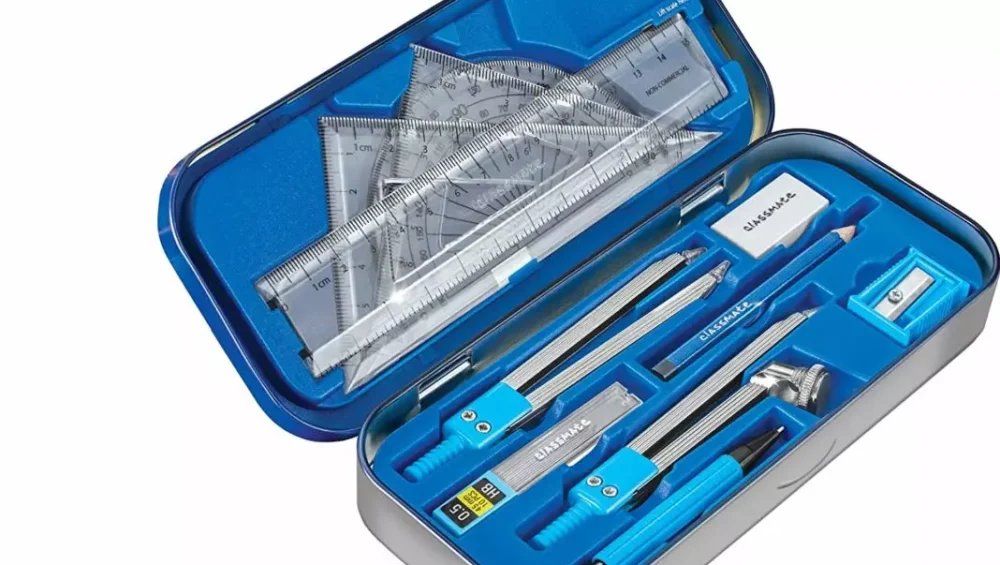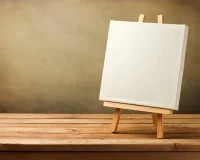Welcome to the Kingdom of Geometric Shapes, where shapes are alive, angles enjoy moves, and dimensions have personalities. The box containing geometrical shapes is perhaps the tool for mixing and creating this enchanting realm of math and art. We shall proceed to discover the endless possibilities of geometry and what a marvel it is.
If you are a student who finds it challenging to learn about geometric shapes or an artist who might need ideas for the next artwork, the box is your best friend. Its tools, Compass, Protractor, Ruler, and many more, are not simple measurement tools but avenues to creativity and solutions.
Geometry has been a part of art, design, architecture, and even nature since art began due to the nature of its angles and symmetrical forms. Geometry can be seen manifested starting from the building structure of the Parthenon and down to the structure of seashells.
Welcome to this episode, where we explore how geometry is used in the real world, from graphic design to fashion design. Learn how it has affected our world and energized our creativity. Get ready to be surprised when we open the lid of the geometry box and see the vast potential for creativity.
Overview of the geometry box
The geometry box is a collection of elements that will help us to discover and contemplate the essentials of geometry. It usually consists of a compass, protractor, ruler, sets of squares, and many more instruments. All these tools are essential and serve a specific role, so when used together, they constitute a toolkit for dealing with geometry.
For example, a compass is a circular object with a hinged arm that helps draw circles and arcs accurately. By varying the length of the arm and positioning the needle at the required point of barycentres, we can obtain circles of different sizes and with required radii. Among the benefits of constructing geometric shapes with this tool are the concepts of circles, angles, and tangents.
Another essential piece of equipment commonly found in geometry is a protractor. This semicircular graduation is in degrees and can be used to estimate and depict angles appropriately. The main use of the protractor is to measure existing angles within a particular shape or create angles of certain measures. It is useful in explaining properties involving triangular, quadrilateral, and other polygon shapes.
The ruler, like the pencil, is a simple implement that offers great convenience, and this is found in the box as well. coupled with the application of this tool, we can easily find the length, and also, draw straight line and construct polygons of different shapes. With the ruler we can draw two parallel lines, perpendicular lines, and angles that measures certain degrees. Being very accurate and easy to use, it proves to be a vital tool to help students tackle geometric constructions and problems.
Understanding the uses of a compass
The compass is a very useful instrument since it can draw circles as well as arcs of a given circle perfectly. It helps use investigate the nature of circles, draw tangents and perpendicular bisectors, and even draw special patterns. We can extend or shorten the compass arm and, by fixing the needle on the point we wish to become the center of the circle, we can easily draw circles of any required diameter.
A compass is mainly used for drawing circles, and one of its main functions is for that purpose. From a small circle to the most intricately patterned design, the compass is an essential tool. This way, using a compass, we can draw circles of different sizes and examine different aspects of this geometrical figure. There are special features of circles; for example, the distance from the center to any two points of the circle is equal. This property provides the framework for many geometrical constructions and numerous proofs.
It is also effective in constructing tangents as illustrated below: Tangents are lines that only meet a circle at one point and constructing these lines forms an important part of geometry . With the help of the compass, it becomes fairly simple to make a tangent to a given circle and so we can study the circles and lines more closely.
It is also important to note that with the compass, one can construct perpendicular bisectors as well. A perpendicular bisector is a line that passes through a segment, is at right angles to the segment, and cuts the segment into two equal halves. This is achieved by using the compass to draw arcs from the ends of the line segment and finding those intersection points. Surprisingly, this construction is applicable to more than just geometry; it is also relevant to architecture and engineering disciplines.
Exploring the versatility of a protractor
The protractor is a versatile tool that allows us to measure and draw angles accurately. Its semicircular shape and marked degrees enables us to explore the properties of angles and construct them with precision.
One of the primary uses of a protractor is in measuring angles. By aligning the center of the protractor with the vertex of an angle and reading the degree markings, we can determine the size of the angle. This is crucial in understanding the properties of geometric shapes and solving problems involving angles.
The protractor is also instrumental in constructing angles of specific measurements. By placing the angle’s vertex at the protractor’s center and aligning one side with the baseline, we can draw an angle of the desired size. This is particularly useful in geometric constructions and proofs, where precise angles are required.
Furthermore, the protractor allows us to explore the relationships between angles. By measuring the angles of different shapes, we can identify patterns and properties that help us understand the nature of angles. For example, in a triangle, the sum of the interior angles is always 180 degrees. By measuring the angles of different triangles, we can verify this property and deepen our understanding of geometric concepts.
The role of a ruler in geometry
In the field of geometry, the simplest yet powerful tool worth mentioning is the ruler. Its straight edges and marked units enable us to measure lengths, draw straight lines, and construct polygons of different shapes.
In general, the common function of a ruler is to measure length. As seen, by placing the ruler parallel to the ruler and reading from this position, one can get the length of the line segment. This is basic in geometry since length is the raw material for producing shapes or figures.
The ruler is also used to create straight lines by the ruler. It is easy and fast to draw consecutive lines using a straight edge, such as a ruler because one end of the ruler is placed on the given point while the other is placed on the paper. This is essential in geometrical constructions since lines are building blocks for shapes and angles.
Besides measuring length and drawing lines, the ruler enables the construction of different polygons. When the ruler is used to join specific points with straight lines, triangles, quadrilaterals, and other polygons can be formed. This is especially the case in Geometric proofs, where the construction and analysis of polygons are inevitable.
Tips and tricks for using a geometry box effectively
What is more, there is the following advice on using geometry or an activity box that is of importance apart from the tools used in it: Here are some helpful pointers for making the most of your geometry box:
- Keep your tools organized: When you overwhelm your geometry, it becomes difficult to work properly. Remember always to coil your compass, keep your protractor in its place, and put your ruler and other tools back in their rightful places. This will prove helpful when you are looking for a particular tool, as you will just have to scroll the list instead of making several searches.
- Practice precision: Geometry, as a branch of math, is primarily focused on precise measurements. Be careful when using a compass, protractor, and ruler, and take time while drawing your measurements and constructions to increase accuracy. This will broaden your knowledge of geometry and hone your problem-solving abilities.
- Experiment with different constructions: Do not restrict yourself to constructing the kinds of sentences taught in elementary classes. It is recommended that you change the tool and technique frequently to create various shapes and figures. Engaging in these tasks can enhance your understanding of geometry and unlock your talents.
Using the above tips and tricks, you can use your geometry and the depth of your geometry exploration.
Conclusion: Embracing the power of geometry with a geometry box
In conclusion, the geometry box is an effective device that de-mystifies and makes geometry clear and exciting. As a math tool that includes a compass, a protractor, a ruler, and other tools, it enables the discovery of a world of shapes, angles, and dimensions.
Geometry helps us comprehend geometric concepts and solve problems by drawing perfect circles, squaring off shapes, and reading measurements for angles. Art is a gateway through which formal education prepares artists, designers, and architects to produce masterpieces.
To one who is studying geometry to grasp concepts in geometric lessons, the box is an inevitable tool. Make good use of its supremacy and imagine away. Allow yourself to be mesmerized by the beauty of geometry as you discover the various possibilities of what geometry has in store for you.





